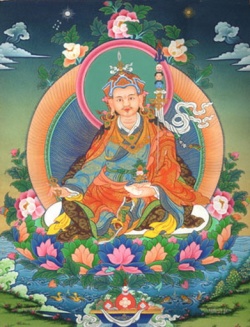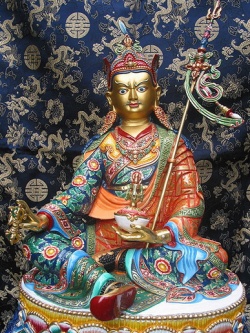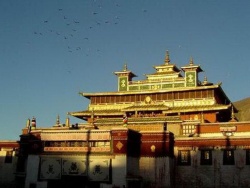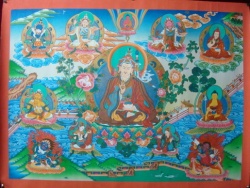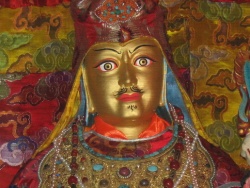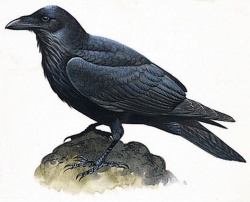Difference between revisions of "Rinchen Terdzo"
m (Text replacement - "]]]" to "]])") |
|||
| (One intermediate revision by one other user not shown) | |||
| Line 71: | Line 71: | ||
| − | ===[[Lineage]] and the [[Rinchen Terdzo]] | + | ===[[Lineage]] and the [[Rinchen Terdzo]])]=== |
| Line 197: | Line 197: | ||
{{R}} | {{R}} | ||
[http://www.rinchenterdzo.org/~rinchent/?page_id=918 www.rinchenterdzo.org] | [http://www.rinchenterdzo.org/~rinchent/?page_id=918 www.rinchenterdzo.org] | ||
| − | [[Category: | + | [[Category:Rinchen Terdzo]] |
Latest revision as of 22:49, 4 April 2016
By Walker Blaine
[This is portion of an article to be published on The Chronicles of Chogyam Trungpa Rinpoche.]
Termas are teachings that were hidden so that they could be revealed in a future time and context when they would be needed most, when beings will be most capable of using them. Strictly speaking, termas are a unique feature of the Tibetan tradition, and in particular the Nyingma school.
Terma practices tend to be pithy, effective and easier to use than their counterparts in the kama or oral transmission lineage.
It is for this reason they arise—they are a timely, fresh and energetic means to present the dharma and achieve realization.
While the Nyingma oral transmission that came from India is still preserved at different monasteries, the main practices of the Nyingma are termas.
The Rinchen Terdzo, The Precious Treasury of Termas, is a storehouse of eleven centuries of vital termas, some nearly extinct, some incredibly popular.
It is a compendium of some of the most important termas in Tibet, a collection that gives a deep taste of the works in many great practice traditions.
Jamgon Kongtrul Lodro Thaye assembled the collection over three decades near the end of the 19th century with the guidance and help of his teacher, Jamyang Khyentse Wangpo.
The sequence of empowerments in the Rinchen Terdzo presents a systematic, experiential journey through mahayoga, anuyoga and ati yoga, the three uppermost divisions of the vajrayana path in the context of Nyingma practice.
This is part of what makes the collection so amazing and useful; it is a vast, comprehensive, living transmission of vajrayana practice and realization from start to finish.
Whether a realized lineage holder or an ordinary practitioner receives the transmission, the teachings and practices contained in the collection are invaluable and represent the living heart of the Nyingma tradition.
The Rinchen Terdzo is transmitted by means of two principle methods, the empowerment and the reading transmission.
An empowerment is a ritual display of all aspects of a particular tantric practice.
In its most expanded form, the Rinchen Terdzo contains around 900 empowerments and represents the lineages of well over a hundred tertons and visionaries.
The reading transmission is a reading of every part of the collection not already spoken during an empowerment so that the recipient has personally received the entire teaching.
In most cases, different lineage holders perform the empowerment and reading transmissions of the Rinchen Terdzo.
The reading transmission includes the detailed instructions for the practices presented in the empowerments, the life stories of the tertons, and so on.
While not essential for personal practice, the reading transmission is necessary for those carrying on the transmission to future generations.
In contemporary printings, the Rinchen Terdzo is 111 volumes long, about 60 of which comprise the reading transmission.
There are two types of recipients for the Rinchen Terdzo.
The first type is someone given the responsibility, at least potentially, of carrying the transmission of the Rinchen Terdzo forward and bestowing it on the next generation of teachers.
At any Rinchen Terdzo empowerment, one or some of this type of recipient is enthroned as a lineage holder and given the direct responsibility to carry the transmission forward.
The second type of recipient is the general practitioner who receives the practices of the Rinchen Terdzo, but not the responsibility to carry the lineage forward.
Some people in this group intend to practice at least some of the traditions in the collection; others receive the Rinchen Terdzo as a blessing without an intention to do the practices.
For all the recipients, the lineage and empowerments of the Rinchen Terdzo are being planted in some sense as seeds to be ripened later, either in this or a future life.
In a way, this is the main blessing of any empowerment— one is receiving the seeds of wisdom.
These seeds are meant to ripen us as genuine practitioners.
===Lineage and the Rinchen Terdzo)]===
The lineages found in the Rinchen Terdzo extend to us from several sources.
Primarily, the termas were concealed first by Padmasambhava with the help of Yeshe Tsogyal, his main student and Tibetan consort.
There are termas in the collection that were concealed by Vairocana, the great translator, and Vimalamitra, an Indian contemporary of Padmasambhava instrumental in firmly establishing the buddhist teachings in Tibet.
Once these teachers concealed the teachings in the minds of realized students, in space or in rocks and earthd teachers, rebirths of the students Padmasambhava and the others, discovered the teachings in later centuries.
Some of the texts in the collection are re-discovered termas—texts that were found, re-hidden, and discovered anew by an even later terton.
Other texts in the collection are pure visions, teachings given directly from a deity, such as Tara, to a human disciple.
A staggering number of teachers are connected to the Rinchen Terdzo.
It is far more than just the individual tertons because the terma lineages extend from teachers at the time of Padmasambhava, to the tertons, and then to the subsequent lineage holders who carried the transmissions forward until they were gathered by Jamgon Kongtrul, Khyentse Wangpo or by Minling Terchen who compiled the Wish Fulfilling Vase, a 17th century collection of essential termas which later became the seed volumes for the Rinchen Terdzo.
Perusing the index of the Rinchen Terdzo, one is confronted by a vast array of tertons, visionaries and empowerment ritual authors connected with all four schools of Tibetan Buddhism as well as Tibet’s indigenous Bon religion.
The deities and practices named in the collection are similarly far ranging and impressive.
It is impossible to know the minds of Jamgön Kongtrul, Khyentse Wangpo and Chogyur Dechen Lingpa, Kongtrul and Khyentse’s peer and discover of a huge number of termas in the collection.
There were many prophecies that the dharma would suffer a great setback in Tibet in the 20th century, and it is possible that the five major collections of texts gathered by Jamgon Kongtrul (the Rinchen Terdzo being just one) were created in part so that the teachings would not be entirely lost during the difficult future that continues to threaten the continuity of the dharma in our era.
Whatever the reason, the Rinchen Terdzo provides a major link backwards in time to many extraordinary traditions that had strengthened not only the Nyingma, but all lineages from tenth century onward.
It is a great wonder that the transmission continues.
Just one complete edition of the Rinchen Terdzo was brought out of in the late 1950s.
There is nothing else like it in the Buddhist world.
The Rinchen Terdzö and Trungpa Rinpoche’s Wisdom Lineage
Chogyam Trungpa Rinpoche became a lineage holder of the Rinchen Terdzo when he was twelve.
The lineage came to him from his teacher, Jamgon Kongtrul of Shechen, who’d received it from Shechen Gyaltsap, one of the teachers who received the Rinchen Terdzo from Jamgon Kongtrul Lodro Thaye himself.
It was not that unusual for a young lama to be given such a huge responsibility, particularly if the lama was a tulku like the Vidyadhara who was a terton, in training to be a khenpo, a regional political leader and extraordinarily gifted intellectually.
However, what Tibetans count as most amazing, according to Karma Senge Rinpoche, is that Chogyam Trungpa Rinpoche was able to turn around and offer the Rinchen Terdzo to others at the age of fourteen at Drolma Lhakang in Tibet.
Bestowing the Rinchen Terdzo takes a continual effort from long before dawn until way past dusk for three to four months.
Even for an adult it is a great feat.
Four years after first bestowing the Rinchen Terdzo, Chogyam Trungpa Rinpoche offered it again at Yak Gompa. It was his last major act before starting his escape to India.
If one reads Chogyam Trungpa Rinpoche’s book, Born in Tibet, it is clear that the Rinchen Terdzo, and by extension the world of terma, were major features of the Vidyadhara’s youth and development.
His guru at Surmang, Rolpe Dorje Rinpoche, was a terton.
Involvement with the Rinchen Terdzo took up cumulatively almost two years of his life when all the time for preparations, empowerments, and so on are taken into account.
Many practices in the collection were a presence in his experience from an early age.
The Blazing Jewel of Sovereignty, one of the final empowerments in the Rinchen Terdzo and the ritual used in Shambhala to enthrone a Sakyong, was first bestowed on Chogyam Trungpa Rinpoche at the age of eight by His Holiness Dilgo Khyentse Rinpoche.
Vajrakilaya practice, at least sixteen forms of which are contained in the collection, continues to be performed at Surmang Dutsi Til.
In particular, the Longchen Nyingtik, the most popular terma tradition in Tibet, was the Vidyadhara’s main practice from the age of 14.
When Chogyam Trungpa Rinpoche gave the Rinchen Terdzo for the second time, he made His Eminence Namkha Drimed Rinpoche the principle lineage holder.
While Yak Tulku Rinpoche was the sponsor for the Rinchen Terdzo, Namkha Drimed Rinpoche was the highest-ranking lama present and, in that time without electric lights and microphones, he sat within arm’s reach of Chogyam Trungpa Rinpoche, just to the right of the throne.
Like the Vidyadhara, Namkha Drimed Rinpoche is a terton, and they shared visions of the same deity, Akar Werma or Shiwa Okar, who gave Chogyam Trungpa Rinpoche the Shambhala terma.
This connection is significant because it is not always the case that a terton is the one bestowing the Rinchen Terdzo, or the principle one receiving it.
Chogyam Trungpa Rinpoche and Namkha Drimed Rinpoche shared a common inspiration for their activities.
Namkha Drimed Rinpoche comes from a lay family, the Ripa (meaning ‘one of the mountains’), which is named for the 17th century siddha, Ripa Pema Deje Rolpa.
After many years of wandering in mountain retreats, Pema Deje Rolpa established a monastic seat in Kham, eastern Tibet and named it Rigon Tashi Choeling.
Until that time, the family lineage had been Barom Kagyu, one of the eight lesser lineages of the Kagyu.
Ripa Pema Deje Rolpa however, was the speech emanation of Taksham Nuden Dorje, a famous terton some of whose termas are in the Rinchen Terdzo.
Though nearly 20 volumes of his work remain untranslated, Taksham Nuden Dorje is well known in the west for discovering the terma biographies of Yeshe Tsogyal and Mandarava, Padmasambhava’s two principle consorts.
After Ripa Pema Deje Rolpa, the family lineage became more Nyingma in orientation.
Rigon Tashi Choeling and Surmang Dutsi Til are relatively close to each other in the Kham-Nangchen area of Tibet. Namkha Drimed Rinpoche’s father, Drubwang Jigme Tsewang Chokdrub, was a student of the tenth Trungpa and the two would teach in each other’s districts.
At some point, the tenth Trungpa had the wish to receive the Rinchen Terdzo from Jigme Tsewang Chokdrub, but the wish was never fulfilled because Namkha Rinpoche’s father was ill at the time the Rinchen Terdzo could have been bestowed.
Knowing of the 10th Trungpa’s aspiration, Namkha Drimed Rinpoche felt it was very important that he receive the empowerment from eleventh Trungpa, Chogyam Trungpa Rinpoche.
When he heard that the Rinchen Terdzo was to be offered at Yak Gompa, he made every effort to attend the transmission.
It is remarkable that this winter Namkha Drimed Rinpoche, the last remaining holder of the Vidyadhara’s lineage of the Rinchen Terdzo, was able to pass the transmission on to the Vidyadhara’s son and heir, Sakyong Mipham Rinpoche.
It was interesting to discover that Namkha Drimed Rinpoche’s highly accomplished brother, Drubwang Adzin Rinpoche (who passed away in 1992) repeatedly exhorted Namkha Drimed Rinpoche to pass the lineage of the Rinchen Terdzo on to Chogyam Trungpa Rinpoche’s son.
This transmission is important for the continuity of the terma tradition in general, and it is especially important for strengthening the family lineage that Chogyam Trungpa Rinpoche established in the west.
It is Sakyong Mipham Rinpoche’s intention and responsibility now to pass the Rinchen Terdzo on to his heir in order to preserve and nurture as much as possible of Chogyam Trungpa Rinpoche’s lineage mind and heart.
By receiving the Rinchen Terdzo empowerments, Sakyong Mipham Rinpoche has greatly increased the wealth of Shambhala.
